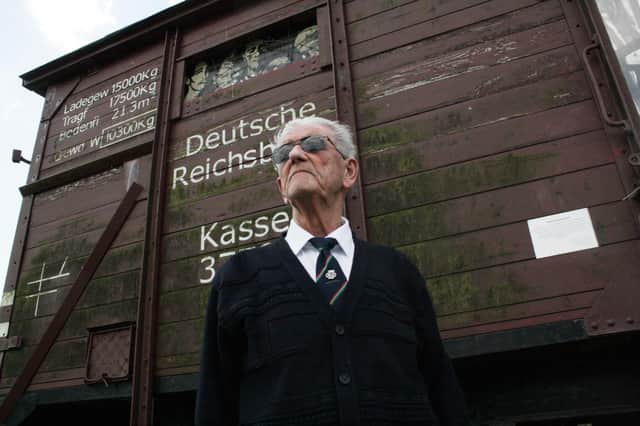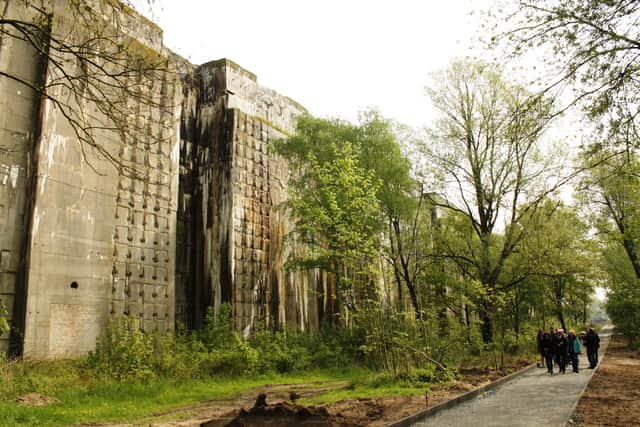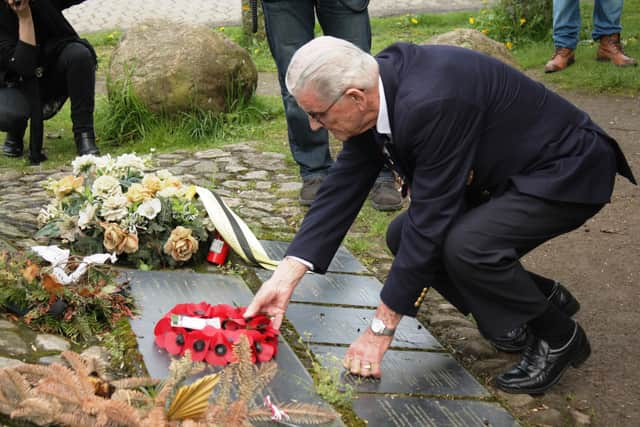Derry man spent WWII as one of ‘Hitler’s Irish Slaves’


Merchant seamen are sometimes regarded as members of the forgotten service during the Second World War, writes Sean McLaughlin.
One such man was Harry Callan - originally from Derry’s Waterside - who was taken prisoner in the South Atlantic in 1941 and later forced to work in horrendous conditions on a top secret submarine bunker in Germany.
Advertisement
Hide AdAdvertisement
Hide AdHarry was a seventeen year-old civilian - a merchant seaman - when his ship was sunk by the German navy in 1941. He was taken prisoner and forced, along with 31 other Irish sailors, to build a giant submarine factory - the Valentin Bunker: a secret project the Nazis hoped would swing the war in their favour.


The conditions were deplorable. Workers were beaten and starved - many died as they worked and their bodies dumped into the foundations. It is estimated that between 3,000 and 6,000 prisoners perished building the Valentin Bunker.
With life expectancy at a premium, Harry and his Irish colleagues - sometimes known as “Hitler’s Irish Slaves” - banded together and most of them survived the war.
However, let’s return to 1941 and the South Atlantic and the moment Harry’s life was to change forever. The Derry man, a cook, has recalled sitting in the galley of the cargo ship ‘Africa Star’ when it was hunted down by a German surface raider.
Advertisement
Hide AdAdvertisement
Hide AdThe South Atlantic, he says, was considered “safe waters” and no-one appeared unduly concerned when a ship - flying a Soviet flag - was spotted in the distance. Suddenly, however, as the ‘Russian’ boat drew closer to the merchant vessel, the hammer and sickle ensign was quickly lowered to be replaced by the Swastika.


These notorious surface raiders - camouflaged and with their guns hidden - spent years at sea, living off cargo vessels and capturing prisoners. The merchant vessel didn’t stand a chance when the Germans opened fire on it.
Harry and his colleagues took to the lifeboats and were eventually pulled from the water onto the German warship where, frightened and scared, they tried to make sense of it all. They were subsequently transported to German-occupied France and, then, on to Germany to a prisoner-of-war camp.
Throughout their captivity, the Irish seamen consistently refused to sign a contractual agreement to become ‘freie arbeiter’ (voluntary workers) for Nazi Germany. Eventually, a number of the Irish seamen - Callan among them - were moved out of the camp by the Gestapo and sent to nearby Bremen.
Advertisement
Hide AdAdvertisement
Hide AdWhen they got there, the Gestapo tried, once again, to convince them to sign legal contracts and to work for Germany. This time, the Irish prisoners were offered new incentives: their food rations were improved and they were even allowed to walk around Bremen without constraint.
Once again, the seamen refused to take the bait – so the Gestapo decided to try harsher tactics. One night, the Irish prisoners were woken abruptly and loaded on to trucks.
They were driven to a new camp near the village of Farge, a small inland port on the Weser. Until then, the Irish seamen had been held in prison camps controlled by the Kriegsmarine, the German navy.
Now, they found themselves in a very different type of camp, and, from here on, their future would rest in the hands of the SS. They were told that, in future,they would not be protected by the Geneva Convention or the International Red Cross.
Advertisement
Hide AdAdvertisement
Hide AdThey did not know it then, but the Irish prisoners would soon learn that they were in Farge to work on Project Valentin: the codename for an immense fortified bunker where Albert Speer - Hitler’s architect - planned to construct submarines on an assembly line, in pre-fabricated sections.
Speer’s ambition was to build a new U-boat every 56 hours and he was prepared to go to any lengths to achieve that objective. It was here, Harry recalls, that prisoners were “treated like animals and worked like animals.”
During his time here, Harry fell ill with pleurisy but, as luck would have it, he soon found himself working in the garden of the camp doctor.
It was a totally different existence for the Derry man - swapping the dangers of working building the bunker to working in a garden, often surrounded by the sounds of children.
Advertisement
Hide AdAdvertisement
Hide AdLiberated at the end of the war in 1945, Harry returned to Ireland where he set up home in Dublin. He returned to the sea after the war, working on ferries as a cook.
Harry, who passed away in 2019, recalls his wartime memories in a fascinating book.
* ‘Forgotten Hero of Bunker Valentin: The Harry Callan Story’, was written by his daughter-in-law, Michele Callan, and is published by The Collins Press.